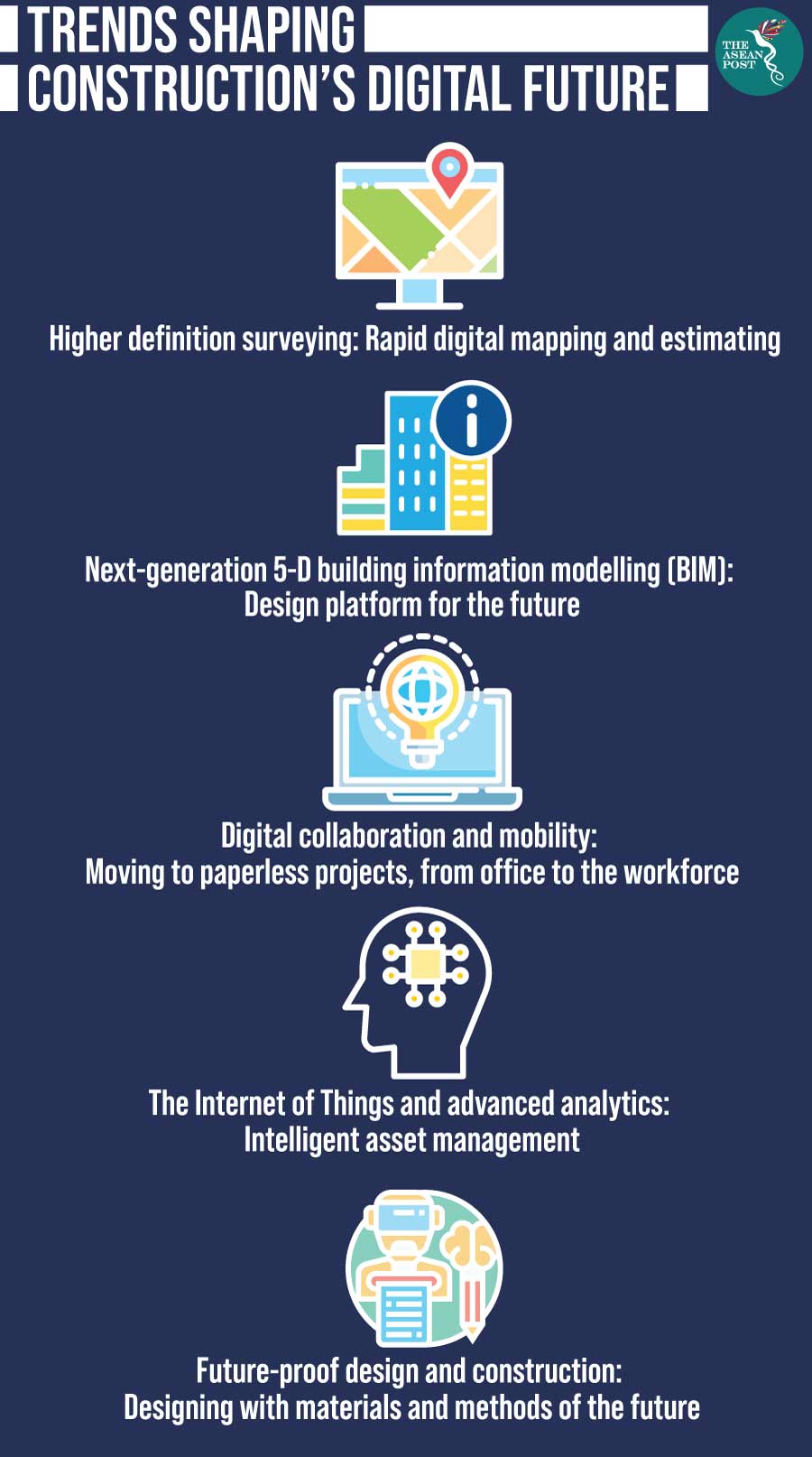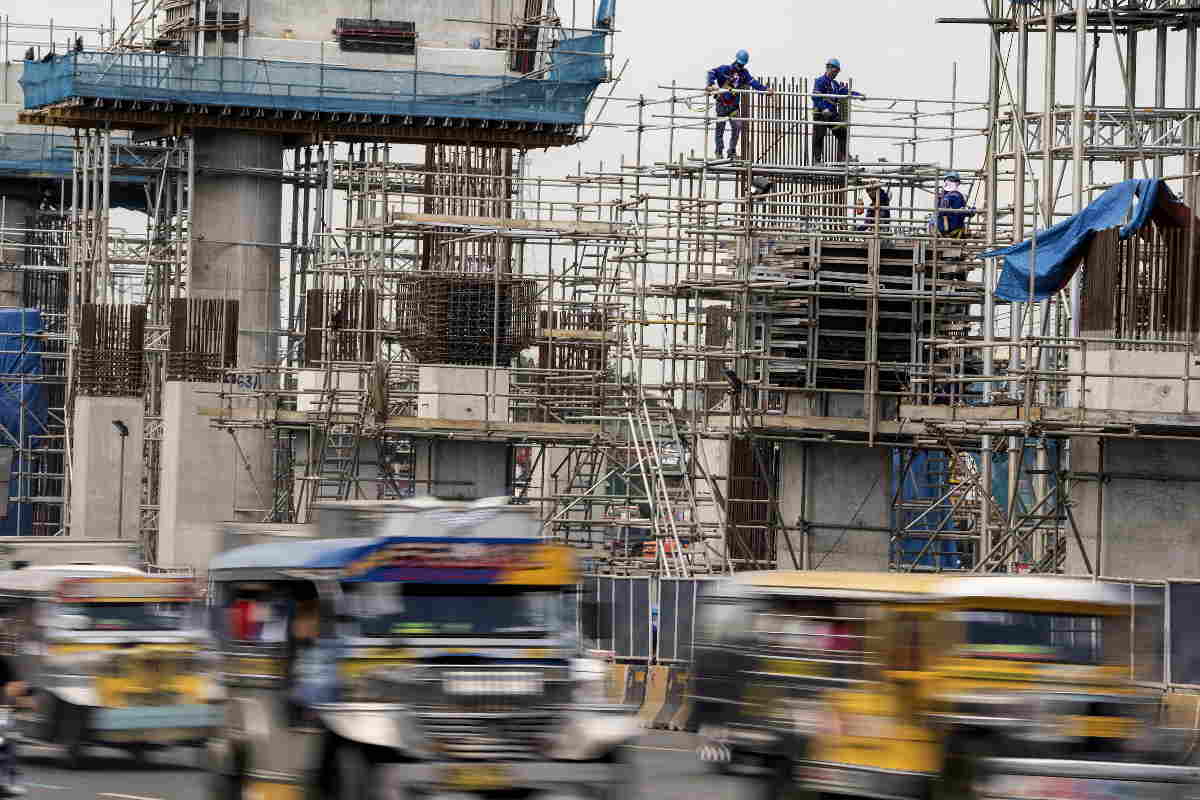Southeast Asia’s construction sector is looking at wide variations of growth in 2019, according to the latest International Construction Costs Report from Arcadis. The report found that the construction industries in the Philippines and Vietnam ranked third and fifth worldwide, respectively, for forecast annual real growth in value. The report also ranked Indonesia in sixth, whilst Thailand, Malaysia and Singapore are ranked 13th, 15th and 24th, respectively.
“One factor that will likely have a major influence on the market is the government’s push to transform the construction industry with Integrated Digital Delivery (IDD). IDD will connect stakeholders in construction projects and mandate the adoption of Building Information Modelling (BIM),” Arcadis researchers noted.
BIM has gained traction in recent years to transform the building and construction industry with digitalisation. But, as newer projects across Southeast Asia get more complex and larger in scale, the industry has yet to fully embrace new digital technologies.
Digitalisation has become a major trend and innovation driver which allows for the creation of new businesses and growth opportunities. The growing demand for more environmentally sensitive construction is also pushing the sector towards digitalisation and moving away from inefficient traditional practices.
Uncoordinated
The construction sector faces continuing challenges in adopting technological processes and innovation. Technical issues also contribute to the industry’s slow process of digitisation, especially when looking at solutions for construction sites that vary in project types, project sizes and location. Some in the sector see new technologies as impractical, partly due to the belief that each project is unique.
Inadequate performance management and unsophisticated supply-chain practices result in uncoordinated project planning between the office and the site, which is often done on paper. Building practices still rely mainly on paper to manage processes and deliverables through blueprints, design drawings, procurement, supply-chain orders, etc. But when it comes to important paper usage, contracts rarely include incentives for risk-sharing and other safety nets.

Integrated platform
Digitisation requires the need to move away from paper to web-based, real-time sharing of information to ensure transparency and collaboration, with timely progress, risk assessment and quality control towards a more reliable outcome. A McKinsey 2016 report titled ‘Imagining construction’s digital future,’ offers ways the industry can transform itself. Among the innovations mentioned include higher-definition surveying and geolocation, the Internet of Things (IoT) and advanced analytics.
According to the same report, 80 percent of all construction work worldwide is still done on-site, but project developers and contractors are already looking into new off-site approaches that can help them improve predictability and consistency. This effort is important due to the impending shortage of skilled labour and ever-shrinking workspaces.
Singapore is advancing a model of construction called prefabricated, prefinished volumetric construction (PPVC), where complete modules of flats are completed with internal finishes, fixtures and fittings in factories. Modules are then transported to the site to be erected in a modular manner, raising improvement level by at least 50 percent.
Other trends to look out for in the construction industry are 5-D BIM and digital collaboration.
Next-generation 5-D BIM is a five-dimensional representation of the project that integrates project planning, design, construction, operations, and maintenance that allows real-time information sharing of design, cost and schedule among clients, contractors and consultants. To get the full benefit of BIM technology, project owners and contractors need to incorporate its use right from the design stage, and all stakeholders need to adopt standardised design and data-reporting formats compatible with BIM.
In Malaysia, BIM technology is not new as many companies are already utilising the integrative platform. Ar Mirzam Taiman, architect and expert in BIM told The ASEAN Post that the application of BIM has not been fully optimised.
“Progress (in BIM) is still slow as some companies are still at [the] awareness stage. Overall, the BIM technology in Malaysia is at Level 2: Implementation stage,” said Ar Mirzam, adding that the technology is not yet a culture in Malaysia’s construction scene.
Ar Mirzam acknowledges the benefits of the technology saying that the work-integrated environment makes the construction process “easy with precise decision-making among project teams and clients.” He also said that BIM increases productivity in the office and on-site with less wastage.
BIM conception has been spreading in construction industries across the region with investors in Vietnam and the Philippines recognising the benefits of applying BIM in their projects. Dr Ernesto de Castro is the strongest advocate for BIM in the Philippines with the belief that the technology will disrupt the local construction industry.
“If we transform construction, we can make it better and faster. This is what you call digitising everything. Once everything is digital, the information is very easy to get, very fast and very cheap. That’s the only way we can join the smart community – when we digitise construction,” explained De Castro.
Future-proof
There is a need for the construction industry in the region to future-proof themselves, either with new building materials, such as nanomaterials or innovative construction approaches, such as preassembled modules which not only lower costs and speed up construction but also improve quality and safety.
McKinsey’s report states that building materials alone represent a US$1 trillion global industry, accounting for more than half the total cost of most projects. Adoption of new technologies, materials and approaches can redefine how projects are conceptualised, designed, and executed.
The construction industry in the region must be ready for change and take the lead in technology and digitisation, or risk being left behind.
Related articles:
Construction in Cambodia lacks safety
